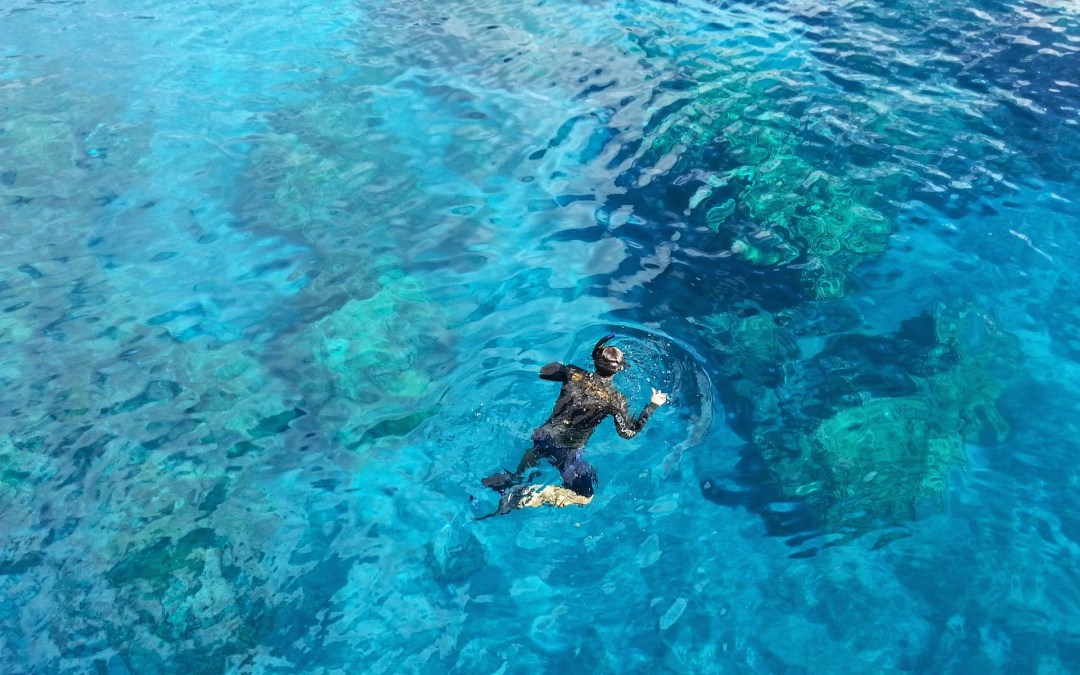8 Do’s & Dont’s Of Snorkeling In Hawaii: Safety Guide

Snorkeling in Hawaii offers an unforgettable experience with its crystal-clear waters, vibrant coral reefs, and diverse marine life. However, ensuring a safe and responsible adventure is as important as enjoying the sights.
If you’re a beginner or a seasoned snorkeler, following the proper practices can help protect both you and the delicate ecosystem. Here’s a comprehensive guide covering the essential do’s and don’ts of snorkeling in Hawaii.
Do’s of Snorkeling in Hawaii
-
Do Check Ocean Conditions Before Entering the Water
With strong currents, large waves, and unexpected weather shifts, Hawaii’s waters can change quickly. Always check local ocean conditions before heading out. Websites like the Hawaii Beach Safety website or asking lifeguards on duty can help you assess whether it’s safe to snorkel.
Also, pay attention to tides and swells, which can impact underwater visibility and swimming conditions. If you’re unfamiliar with the area, consult local guides or experienced snorkelers for advice on the safest entry points.
-
Wear the Right Snorkeling Gear
Proper gear makes all the difference in comfort and safety. Ensure you have a well-fitted mask that seals appropriately to prevent leaks, a snorkel with a dry top to keep water out, and fins to help you move efficiently. A flotation device like a snorkel vest can provide extra buoyancy and make your experience more enjoyable.
Investing in anti-fog spray for your mask can also enhance visibility, preventing condensation from obstructing your view. Additionally, consider using neoprene booties to protect your feet from sharp rocks and coral.
-
Do Respect Marine Life and Coral Reefs
Hawaii’s reefs are home to delicate ecosystems. Avoid touching coral, which can be easily damaged and take years to recover. Keep a safe distance from sea turtles, monk seals, and other marine animals – disturbing them is harmful and illegal under state and federal laws.
To further minimize environmental impact, practice passive observation. Move gently through the water to avoid stirring up sediment, damaging coral, and disrupting the ecosystem. Consider taking an eco-friendly snorkel tour that prioritizes reef conservation and responsible wildlife interactions.
-
Do Snorkel with a Buddy
Even experienced snorkelers should avoid going alone. Having a buddy increases safety, especially in unexpected currents or fatigue. If snorkeling in a group, keep an eye on each other and communicate frequently.
In an emergency, having a buddy nearby ensures someone can call for help or assist you. Establish hand signals before entering the water to communicate quickly, especially in areas with limited visibility.
Don’ts of Snorkeling in Hawaii
-
Don’t Step on or Touch Coral
Coral reefs are living organisms that play a vital role in marine ecosystems. Stepping on them can kill the coral and destroy habitats for fish and other sea creatures. Be mindful of where you place your feet, and always float above the reef rather than standing.
Using a flotation device can help prevent accidental contact with the reef. If you need to rest, find a sandy bottom area instead of standing on coral.
-
Don’t Feed or Chase Marine Animals
As tempting as it may be to interact with marine life, feeding or chasing animals can disrupt their natural behavior and make them reliant on humans for food. Observe from a distance and let wildlife move naturally in their habitat.
Feeding fish can also lead to aggressive behavior and upset the balance of the marine ecosystem. Many aquatic species have specific diets, and human food can harm their health. It is illegal to interact with Hawaiian green sea turtles and you must keep a distance of 10 feet away from them. In addition to this, dolphins, monk seals, and whales are protected under the same law however these encounters are less common. Read more about Hawaii’s Marine Life Viewing Laws.
-
Don’t Ignore Warning Signs and Safety Guidelines
Hawaii’s beaches often have warning signs indicating dangers like rip currents, jellyfish, or high surf. Ignoring these warnings can lead to dangerous situations. Always take safety advisories seriously and follow posted guidelines.
Lifeguards are there to help—don’t hesitate to ask them for advice on safe snorkeling areas and current conditions. If a beach is marked as unsafe for swimming, choose an alternative location with calmer waters.
-
Don’t Wear Harmful Sunscreen
Many commercial sunscreens contain chemicals like oxybenzone and octinoxate, which can damage coral reefs. Instead, opt for reef-safe sunscreens that use natural minerals like zinc oxide or titanium dioxide. Wearing a rash guard or UV-protective swimwear can also help reduce the need for sunscreen.
Hawaii has banned the sale of certain reef-damaging sunscreens, so check product labels before applying or purchasing. Applying sunscreen at least 30 minutes before entering the water allows it to absorb correctly and minimizes runoff into the ocean.
Additional Snorkeling Safety Tips
- Know Your Limits: If you’re not a strong swimmer, stick to calm, shallow areas or wear a flotation device for added safety.
- Enter and Exit Safely: Use designated entry points to avoid damaging coral and minimize risks of injury from rocky shorelines.
- Stay Hydrated: Hawaii’s sun and saltwater can quickly dehydrate you. Drink plenty of water before and after snorkeling.
- Be Aware of Marine Life: While shark encounters are rare, it’s wise to avoid snorkeling at dawn, dusk, or in murky waters, as these conditions can increase risks.
- Practice Controlled Breathing: Staying calm and taking slow, deep breaths through your snorkel can help conserve energy and relax you in the water.
- Familiarize yourself with local marine laws: Hawaii has strict protections for aquatic life on land in the water. Know the rules before arriving at your destination to avoid fines and help with conservation efforts.
Hawaii Snorkeling Safety Resources
For the latest ocean safety information, including current conditions, safety guidelines, and local regulations, visit the official safety pages for each Hawaiian island. Remember, conditions can vary on every island depending on which side of the island you are on. Always do your research and check local conditions.
Checking these resources before snorkeling can help ensure a safe and enjoyable experience while respecting the ocean’s power and unpredictability.
Final Thoughts On Snorkeling Safety In Hawaii
Snorkeling in Hawaii is a truly breathtaking experience. Still, it’s essential to approach it with respect for nature and a focus on safety. By following these do’s and don’ts, you’ll ensure a fun, responsible, and unforgettable adventure while helping to preserve Hawaii’s marine ecosystems for generations to come.
If you’re looking for a guided snorkeling tour led by experienced professionals, consider booking with Kauai Sea Tours for a safe and immersive ocean experience!

